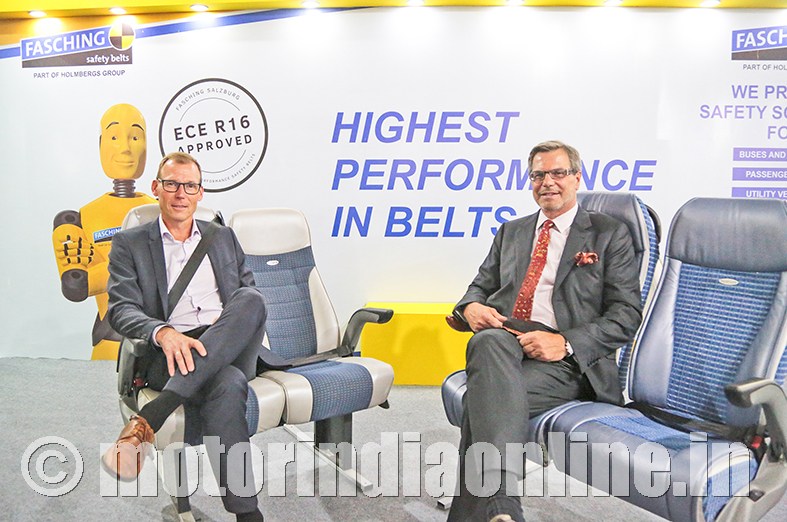Local plant to start production by 2020
Austrian firm Fasching Salzburg GmbH, a leading supplier of safety seat belts for coaches, buses and LCVs worldwide, part of Holmbergs Group, is in advanced stages of discussion with a local partner in India and is prepared to sign a joint venture (JV) agreement before the end of the current year. The company hopes to be ready for production at its new Indian plant by the end of 2019.
Says Mr. Harald Pessl, Senior Director, Fasching Salzburg GmbH: “We have the intention to be present in India with local production and have signed an LoI in December 2017 with a potential partner. We are currently defining the contract and are hence unable to reveal the name of the partner right now. We will take around 12 to 14 months to set up the plant which is likely to be near Chennai.”
The company will use the facility for product assembly, testing and also focus on developing India-specific products. While the seat-belt maker would be producing plastic and metal parts locally, it does not plan to invest in injection molding or stamping machines in the first phase and prefers to outsource such operations to quality suppliers it has identified locally.

In the global arena, Fasching’s aim is to increase its business by 15 per cent year-on-year. As part of its global expansion plans, it will foray into the North American market in the coming months. In terms of segment focus, the supplier is keen on extending its presence beyond the bus & coach sector, where it has a stronghold, to agriculture vehicles, construction vehicles, all-terrain vehicles, fork-lifts and military vehicles as well.
Talking about the targets of the Indian JV, Mr. Pessl adds: “The first target of the JV will be to capture a certain market share in our focus segments. In the long run, we would like to have the same market share as we do in Europe which is around 35 to 40 per cent. The JV will focus primarily on the Indian market, however we will also look at neighboring markets such as Malaysia, Indonesia, Vietnam and Thailand.”
“Also, if there are Indian companies with international presence, we would like to support them with Indian products with state-of-the-art European technology in the long-term.” he said.
With the Indian market sharpening its focus on road safety, driven by the Government’s initiatives towards reducing road accidents and fatalities, Fasching is confident of the market potential and optimistic about being able to make a difference with its products. “I think we have around 150,000 people dying on Indian roads every year at present which clearly shows that safety is a big concern.” he adds.
“But India is a growing market; it is leap-frogging certain steps as seen in the jump from BS-IV to BS-VI and I am quite convinced that the same thing will happen on the safety front too. The Ministry of Road Transport has a clear goal to reduce the death rate on the road to 50 per cent and am sure that the public also want to improve road safety in the country”, he shares.
Fasching presented its ALR-ELR type safety belt at the show, a solution it had first showcased officially to the public at Busworld Kortrijk in 2017. The company has also developed, along with a partner, a monitoring system for coaches that informs the driver, even during the ride, when a seat is occupied by a passenger but the safety belt is not being used.
This will become an important solution for school transport and inter-city traffic as well. The system will recognize, even if the driver leaves the vehicle and if the engine is switched off, when a seated passenger or a child remains in the coach or school bus and will alert the public through warning signals such as a horn signal and/or blinking warning lights.
Besides these important safety features, the collected data can and will have a huge importance for the fleet/operations management of any operator, such as hop-on hop off sequences, seat occupancy analyses for certain routes and destinations, analyses of the safety belt use for more safety and/or liability reasons, as all the data can be monitored in real-time from any place.